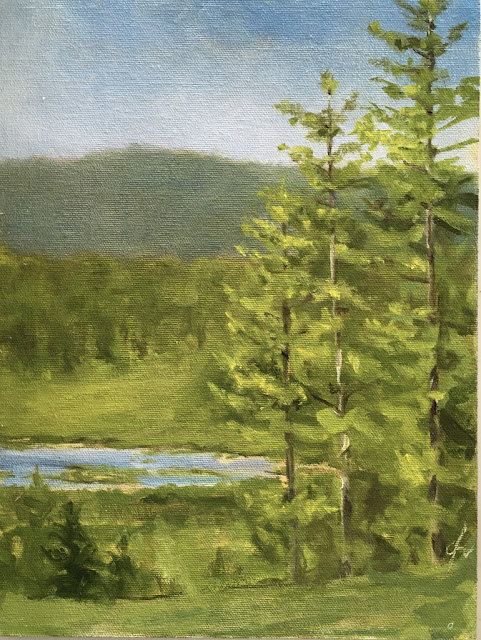The now-famous painter Alice Neel (1900-1984) has a retrospective exhibition at the Metropolitan Museum of Art until the end of August. For those who don't know her work, she was an American realist painter whose uncompromising work and steely vision informed the mid- to late 20th century. This the first exhibition of her work in over two decades, and if the online exhibition is all you can see in this time of pandemic, by all means do so. The current show comprises about one hundred works from all phases of a career spanning over fifty years in the middle of the 20th century.
 |
Alice Neel photographed by Robert Mapplethorpe
|
Alice Neel was born in Pennsylvania in 1900 as one of a large brood. Although she worked to support her parents for a few years she eventually attended art classes at what was then known as the Pennsylvania School of Design for Women, winning prizes for her student work. She married a Cuban painter, Carlos Enriquez, with whom she had two daughters, one of whom died in infancy. After living in Cuba for a few years they returned to the U.S. but Enriquez deserted her (1930) and took their child to Cuba. Ms. Neel suffered a serious mental health break but eventually returned to painting, living the rest of her life in New York City.
 |
Kate Millett, 1970
|
 |
Andy Warhol, 1974
|
Her style has been termed expressionist but she was more influenced by the
Ashcan School and Robert Henri, according to her. During the Depression she began painting female nudes with a distinctly feminine eye that denied the male, sex-object viewpoint. Further, her early works were devoted to Depression scenes of protest and to Communism (though she was never a member of that party). One of most famous paintings is a 1930
portrait of her friend Ethel Ashton, a fellow painter, a precursor of her work with female nudes. Others She used color and line as a powerful way to show the form and penetrate the psychology of women, exaggerating and distorting forms. Still, Ms. Neel felt that she was a realist painter. She was relatively well-known before World War II, but had few shows or recognition until the 1960s.
In her later years, Ms. Neel's work was a significant part of the feminist movement, particularly her female nudes. Her growing recognition meant a commission to paint the author Kate Millett for the cover of Time, and later on a portrait of fellow artist Andy Warhol. .
 |
Self Portrait at 80, 1980
|
At the very end of her career she painted an unflinching nude self-portrait, sitting before her easel with white hair and sagging flesh. It is probably her most famous painting.
The exhibition at the Metropolitan covers Ms. Neel's entire oeuvre, and marks yet another show that I wish I could have seen.

















